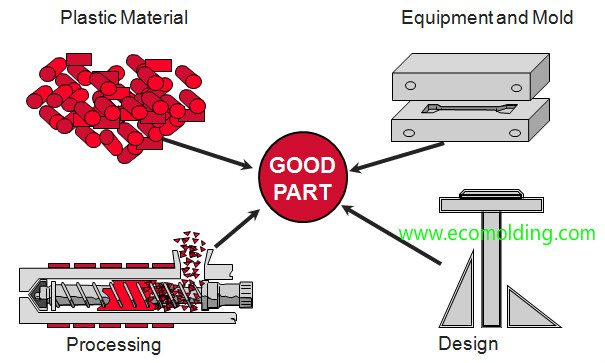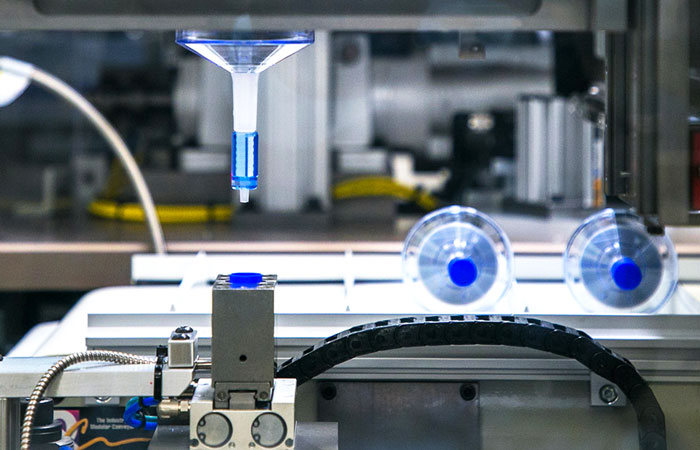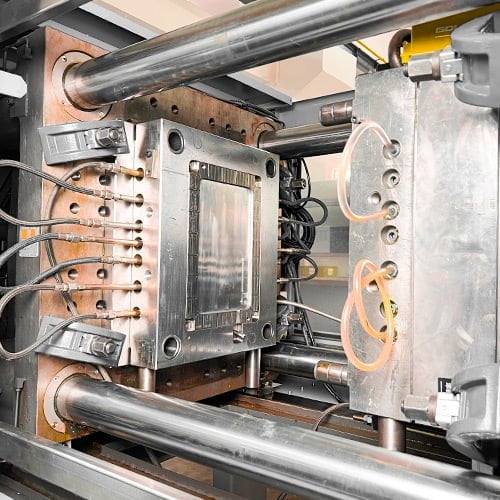Plastic Injection Molding: A Comprehensive Guide to Modern Production Techniques
Plastic Injection Molding: A Comprehensive Guide to Modern Production Techniques
Blog Article
Recognizing the Basics of Plastic Shot Molding Processes
Plastic shot molding functions as a keystone of modern production, offering a systematic approach to generating complex components with precision. This process not just incorporates the fundamental steps of melting and injecting products right into mold and mildews yet additionally entails a nuanced understanding of numerous influencing elements, such as temperature and pressure. As sectors progressively require performance and quality, the details of this technique come to be more crucial. Discovering these crucial elements might reveal exactly how even small modifications can cause substantial renovations in manufacturing end results, elevating questions about the potential for innovation in this established process.
What Is Plastic Shot Molding?
Plastic shot molding is an extensively utilized production process that transforms polycarbonate and thermosetting materials right into accurate and intricate shapes. This strategy is preferred for its capability to generate high volumes of similar components with outstanding accuracy, making it a vital method in numerous sectors, consisting of automobile, consumer items, and medical gadgets.
The procedure includes thawing the selected plastic product and infusing it right into a mold under high pressure. The mold, designed to the specs of the wanted part, allows the molten plastic to take form as it solidifies and cools. As soon as the product has hardened, the mold is opened up, and the completed component is ejected.
Plastic shot molding supplies several benefits, consisting of lowered waste, uniformity in manufacturing, and the capacity to incorporate intricate layouts that may be challenging with other manufacturing techniques. In addition, it sustains a wide variety of products, each giving unique residential properties that can be customized for particular applications. As markets remain to innovate, plastic shot molding stays at the leading edge, making it possible for the growth of innovative items that fulfill progressing customer demands.
The Injection Molding Process
The injection molding procedure is an innovative strategy that involves several vital phases to generate high-quality plastic components. Initially, plastic pellets are fed into a warmed barrel where they are merged a viscous liquid. This molten plastic is then injected under high pressure right into a precision-engineered mold, which shapes the material into the wanted type.
Once the mold and mildew is filled up, the plastic is enabled to strengthen and cool, taking the form of the mold and mildew dental caries. Air conditioning time is important, as it impacts the cycle time and the last residential or commercial properties of the molded component. After sufficient air conditioning, the mold and mildew opens, and the ended up element is ejected utilizing ejector pins.

Products Made Use Of in Injection Molding
Numerous products can be utilized in the shot molding procedure, each offering special properties that accommodate particular applications. The most pop over to this web-site typically used materials consist of thermoplastics, thermosetting plastics, and elastomers.

Thermosetting plastics, like epoxy and phenolic materials, undergo a chemical modification during the curing process, causing a rigid, stringent framework. These products are excellent for applications needing high warm resistance and architectural integrity, often made use of in electrical insulators and auto parts.
Elastomers, consisting of silicone and rubber-based products, provide flexibility and resilience. Their special residential properties make them appropriate for applications that demand elasticity, such as gaskets and seals.
In addition, specialized materials like bio-based plastics and composites are getting grip for their ecological benefits and improved efficiency features, widening the extent of shot molding applications in various industries. Understanding the residential properties of these materials is essential for choosing the proper type for certain tasks.
Benefits of Shot Molding
Injection molding sticks out as a very reliable production process that offers numerous benefits for generating intricate components with accuracy. Among the most significant benefits is the capacity to develop complex styles that would be difficult or tough to achieve with various other approaches (Plastic Injection Molding). The procedure enables tight tolerances and comprehensive functions, making sure premium components
Additionally, shot molding is understood for its fast manufacturing capacities, making it an excellent option for high-volume production. As soon as the mold and mildew is developed, components can be generated promptly, minimizing lead times and raising general performance. This performance not only lowers production costs yet likewise gives an one-upmanship in the market.
The convenience of materials made use of in shot molding additionally enhances its charm. A wide array of thermoplastics and thermosetting polymers can be utilized, permitting producers to pick materials that best satisfy their specific demands, consisting of warm, adaptability, and strength resistance.
Additionally, the procedure minimizes waste, as excess material can commonly be recycled and recycled. This sustainability element adds to a decreased ecological impact, making shot molding a check out this site liable manufacturing selection. Overall, the benefits of injection molding make it a favored method for many sectors.
Variables Impacting Product High Quality
While countless aspects can affect product high quality in injection molding, understanding these components is essential for accomplishing optimum results. Key facets consist of product choice, processing specifications, and mold style.
Material choice plays a vital function, as different polymers exhibit one-of-a-kind properties that influence flowability, toughness, and thermal stability. Inadequate material choice can result in problems such as warping or incomplete dental filling.
Processing specifications, including cycle, pressure, and temperature time, should be carefully regulated. Variants in these settings can lead to inconsistencies in part dimensions and surface finish. Excessively high temperature levels might create deterioration of the polymer, while insufficient stress can result in short shots.
Mold and mildew style is just as essential, as it figures out the circulation of the molten plastic and the cooling process. Poorly made molds might lead to irregular air conditioning prices, causing dimensional mistakes and recurring tensions.

Final Thought
In verdict, plastic shot molding works as a critical production procedure that enables the reliable production of premium parts. Proficiency of the shot molding process, consisting of the understanding of materials and the influence of different factors on product quality, is essential for accomplishing optimal results. The benefits of this approach, such as cost-effectiveness and design flexibility, further underscore its value throughout numerous sectors, strengthening its condition as a favored selection for high-volume manufacturing.
Plastic shot molding serves as a cornerstone of modern-day production, giving a systematic technique to producing complex components with accuracy.Plastic injection molding offers numerous benefits, consisting of lowered waste, consistency in manufacturing, and the capacity to integrate detailed layouts that might be challenging with various other producing methods (Plastic Injection Molding). As industries proceed to innovate, plastic shot molding remains at the leading edge, enabling the development of advanced items that fulfill developing consumer demands
The shot molding procedure is an advanced technique that includes numerous essential stages to generate premium plastic parts.In final thought, plastic injection molding offers as a crucial production procedure that allows the effective production of premium parts.
Report this page